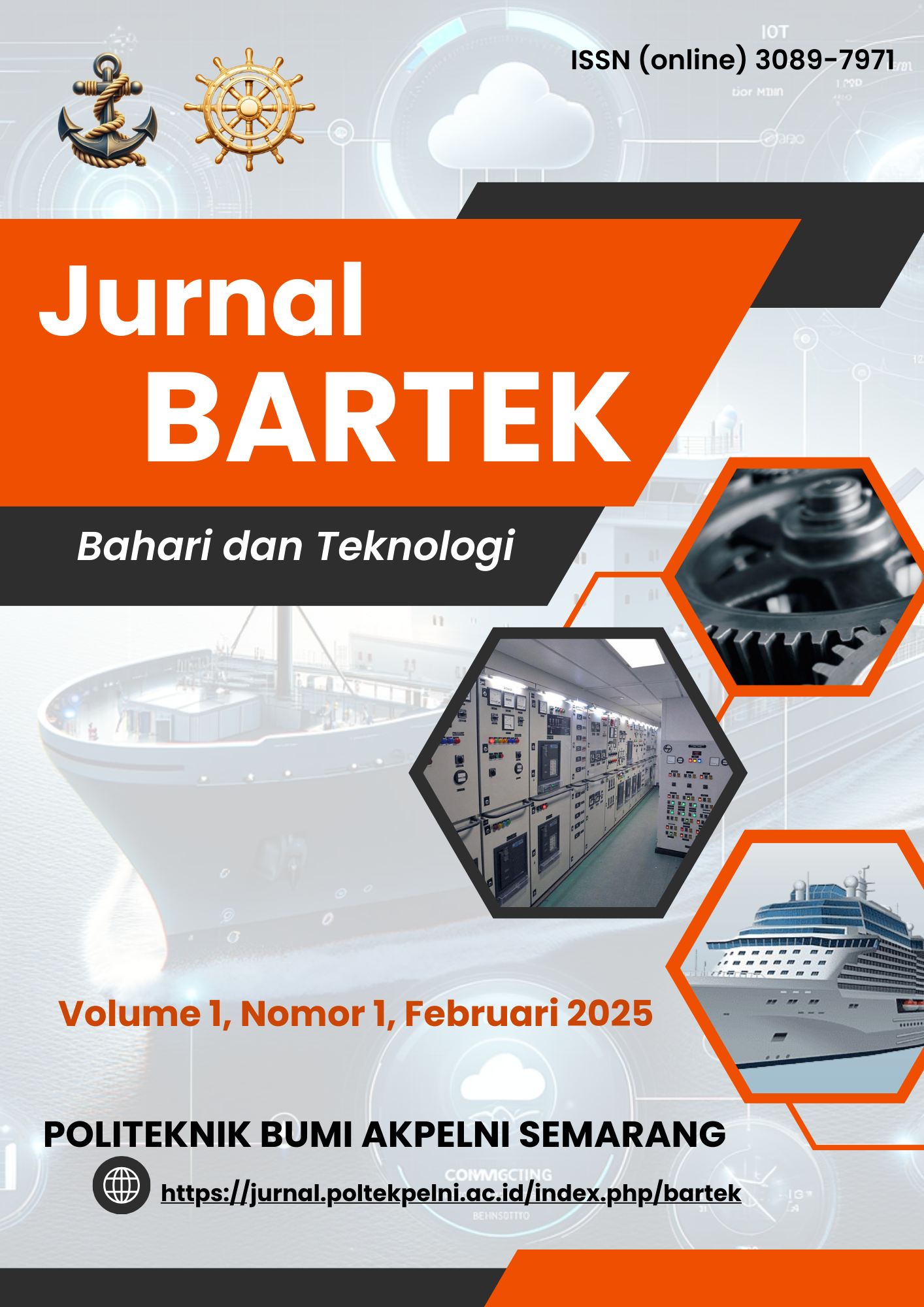Analisis Kinerja Pneumatic Quick Closing Valve untuk Meningkatkan Keamanan dan Keselamatan di MT. Sultan Mahmud Badaruddin II
DOI:
https://doi.org/10.6425/mw0dp249Keywords:
Pneumatic Quick Closing Valve, Engine room fire, Crew Security and Safety, FTA (Fault Tree Analysis), USG (Urgency, Seriousness, Growth)Abstract
The quick closing valve cannot close quickly during training (drill) due to several technical factors. Conditions like this are very dangerous, especially when a fire occurs in the engine room which requires the use of a quick closing valve which must be able to close quickly. This research aims to analyze the decreasing performance of pneumatic quick closing valves on MT ships. Sultan Mahmud Badaruddin II. The research method used is descriptive qualitative with data collection techniques through direct observation on MT ships. Sultan Mahmud Baharuddin II, interviews, and documentation studies. Data analysis was carried out using two methods, namely the Fault Tree Analysis (FTA) method to identify the causes of decreased performance of the pneumatic quick closing valve, and the USG (Urgency, Seriousness, Growth) method to determine problem handling priorities. The research results showed that the decrease in the performance of the pneumatic quick closing valve was caused by a buildup of scale and paint coating on the valve parts, corrosion on the threaded shaft, and imperfect installation of the air pipe. The impact of this reduced performance includes delays in valve closure and the potential to worsen a fire if an emergency situation occurs. The handling efforts carried out are routine checks every week as well as maintenance and repairs according to the manual book.
Downloads
Published
Issue
Section
License
Copyright (c) 2025 JURNAL BARTEK

This work is licensed under a Creative Commons Attribution-ShareAlike 4.0 International License.








